Kashi Nepal Combo Group Package
Kashi Nepal Combo Group Package
Dashashwamedh Ghat to witness the foremost attraction of Varanasi
Triveni Sangam where the three rivers, Ganga, Yamuna and Saraswati meet
Ayodhya sightseeing
Sarang kot to enjoy Sunrise view of Pokhara
Subah – e – Banaras here you will be taken on a boat ride on the river of Ganges to enjoy the sun rising
- includes
- excludes
Things to do in and around varanasi
How to reach varanasi?
We've established convenient pickup and drop options right in your vicinity. Simply download the app, book your package using your location, and inform us of your exact whereabouts. Additionally, we've outlined various routes to reach the destination, taking into account commonly used traffic patterns.
Additional Information about Kashi Nepal Combo Group Package
Kashi Nepal Combo Group Package For enquiries
If you are looking to know more information about Kashi Nepal Combo Group Package, our team at varanasi will assist you personally through the below dedicated number
Kashi Nepal Combo Group Package address
Kashi Nepal Combo Group Package,
varanasi,
uttarpradesh
Whatsplan's Kashi Nepal Combo Group Package contact number : +91 9842067265
Places covered in(12)
Kashi Vishwanath Templevaranasi, uttarpradesh
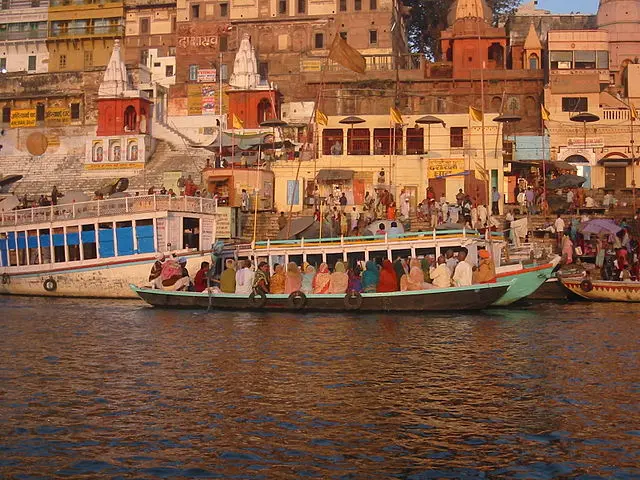
Kashi Vishvanath Temple is one of the most famous Hindu temples dedicated to Lord Shiva. It is located in Varanasi, Uttar Pradesh, India. The temple stands on the western bank of the holy river Ganga, and is one of the twelve Jyotirlingas, the holiest of Shiva temples. The main deity is known by the name Vishvanatha or Vishveshvara meaning Ruler of The Universe. Varanasi city is also called Kashi, and hence the temple is popularly called Kashi Vishvanath Temple. Its name originally was Vishveshvara (broken down Vishwa: Universe, Ish: Lord; Vara: Excellent) or Lord of the Universe. Since 1983, the temple has been managed by the government of Uttar Pradesh. During the religious occasion of Shivratri, Kashi Naresh (King of Kashi) is the chief officiating priest. The temple has been mentioned in the Puranas including the Kashi Khanda (section) of Skanda Purana. The original Vishwanath temple was destroyed by the army of Qutb-ud-din Aibak in 1194 CE, when he defeated the Raja of Kannauj as a commander of Mohammad Ghori. The temple was rebuilt by a Gujarati merchant during the reign of Delhi's Sultan Iltutmish (1211-1266 CE). It was demolished again during the rule of either Hussain Shah Sharqi (1447-1458) or Sikandar Lodhi (1489-1517). Raja Man Singh built the temple during Mughal emperor Akbar's rule, but orthodox Hindus boycotted it as he had let the Mughals marry within his family. Raja Todar Mal further re-built the temple with Akbar's funding at its original site in 1585. In 1742, the Maratha ruler Malhar Rao Holkar made a plan to demolish the mosque and reconstruct Vishweshwar temple at the site. However, his plan did not materialize, partially because of intervention by the Nawabs of Lucknow, who controlled the territory. 2 Around 1750, the Maharaja of Jaipur commissioned a survey of the land around the site, with the objective of purchasing land to rebuild the Kashi Vishwanath temple. 85 However, his plan to rebuild the temple did not materialize either. In 1780, Malhar Rao's daughter-in-law Ahilyabai Holkar constructed the present temple adjacent to the mosque. In 1828, Baiza Bai, widow of the Maratha ruler Daulat Rao Scindhia of Gwalior State, built a low-roofed colonnade with over 40 pillars in the Gyan Vapi precinct. During 1833-1840 CE, the boundary of Gyanvapi Well, the ghats and other nearby temples were constructed. A 7-feet high stone statue of Nandi bull, gifted by the Raja of Nepal lies to the east of the colonnade. Many noble families from various ancestral kingdoms of Indian subcontinent and their prior establishments make generous contributions for the operations of the temple. In 1841, the Bhosales of Nagpur donated silver to the temple. In 1835, Maharaja Ranjit Singh donated 1 tonne of gold for plating the temple's dome. The Manikarnika Ghat on the banks of Ganges near to the Kashi Vishwanath Temple is considered as a Shakti Peetha, a revered place of worship for the Shaktism sect. The Daksha Yaga, a Shaivite literature is considered as an important literature which is the story about the origin of Shakti Peethas. The Kashi Vishwanath temple receives around 3,000 visitors every day. On certain occasions the numbers reach 1,000,000 and more. Noteworthy about the temple is 15.5 metre high gold spire and gold dome. There are three domes each made up of pure gold. Located on the banks of the holy Ganges, Varanasi is regarded among the holiest of the Hindu cities. The Kashi Vishwanath temple is widely recognized as one of the most important places of worship in Hindu religion. Inside the Kashi Vishvanath Temple is the Jyotirlinga of Shiva, Vishveshvara or Vishvanath. The Vishveshvara Jyotirlinga has a very special and unique significance in the spiritual history of India. Many leading saints, including Adi Sankaracharya, Ramakrishna Paramhansa, Swami Vivekananda, Bamakhyapa, Goswami Tulsidas, Swami Dayananda Saraswati, Sathya Sai Baba and Gurunanak have visited the site. A visit to the temple and a bath in the river Ganges is one of many methods believed to lead one on a path to Moksha (liberation). Thus, Hindus from all over the world try to visit the place at least once in their lifetime. There is also a tradition that one should give up at least one desire after a pilgrimage the temple, and the pilgrimage would also include a visit to the temple at Rameswaram in Tamil Nadu in Southern India, where people take water samples of the Ganges to perform prayer at the temple and bring back sand from near that temple. Because of the immense popularity and holiness of Kashi Vishwanath temple, hundreds of temples across India have been built in the same architectural style. Many legends record that the true devotee achieves freedom from death and saṃsāra by the worship of Shiva, Shiva's devotees on death being directly taken to his abode on Mount Kailash by his messengers and not to Yama. The superiority of Shiva and his victory over his own nature—Shiva is himself identified with death—is also stated. There is a popular belief that Shiva himself blows the mantra of salvation into the ears of people who die naturally at the Vishwanath temple. There are 5 aartis of Shree Kashi Vishwanath:
Hanuman Garhi Mandirayodhya, uttarpradesh
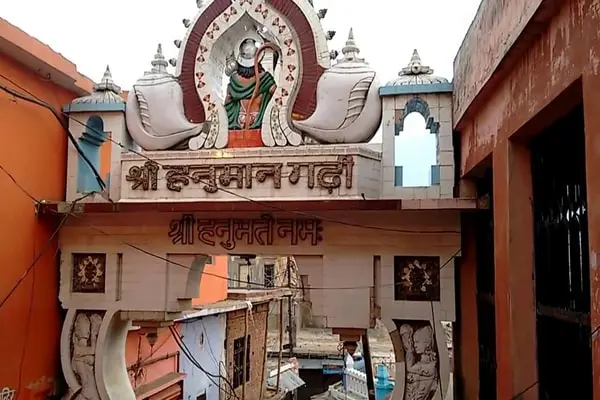
Hanuman Garhi is a revered pilgrimage site and is dedicated to Lord Hanuman, one of the most venerated deities in Hinduism known for his unwavering devotion to Lord Rama. The temple is considered a powerful and auspicious place for Hanuman devotees. Perched on a mound, Hanuman Garhi is strategically located, offering panoramic views of the holy city of Ayodhya. The temple's elevated position provides devotees with a breathtaking vista of the surrounding landscape. The temple's architecture is distinctive, featuring a series of stairs leading to the main sanctum. The temple complex is characterized by its strong and imposing structure, showcasing a blend of traditional Hindu architectural elements. A significant feature of Hanuman Garhi is the colossal statue of Lord Hanuman enshrined within the temple premises. Devotees gather to offer prayers, seek blessings, and witness the grandeur of the deity's idol. Hanuman Garhi attracts a steady stream of devotees and pilgrims throughout the year, and it experiences heightened activity during festivals dedicated to Lord Hanuman, such as Hanuman Jayanti. The atmosphere is filled with devotional chants and religious fervor. The temple hosts various religious ceremonies and aarti sessions, creating a spiritually charged environment. Devotees participate in the rituals, seeking the blessings and protection of Lord Hanuman. One of the highlights of visiting Hanuman Garhi is the opportunity to witness breathtaking sunset views from the elevated temple premises. The serene surroundings and the glow of the setting sun contribute to a tranquil and contemplative atmosphere. Ayodhya, where Hanuman Garhi is located, is deeply associated with the Ramayana, an ancient Indian epic. The city is believed to be the birthplace of Lord Rama, and the Ramayana narrates the heroic deeds of Lord Hanuman in the service of Lord Rama. Hanuman Garhi, like many other temples in Ayodhya, reflects the cultural and religious harmony of the region. It is a place where people from diverse backgrounds come together to offer prayers and participate in the shared spiritual heritage. Hanuman Garhi is easily accessible, and its location in Ayodhya makes it a significant stop for pilgrims visiting the holy city. The temple is an integral part of the larger religious circuit in Ayodhya. The temple exudes a devotional atmosphere, with the ringing of bells, recitation of prayers, and the fragrance of incense permeating the air. Pilgrims often visit Hanuman Garhi seeking solace, divine blessings, and spiritual fulfillment.
Gupteshwor Mahadev Cavepokhara, nepal
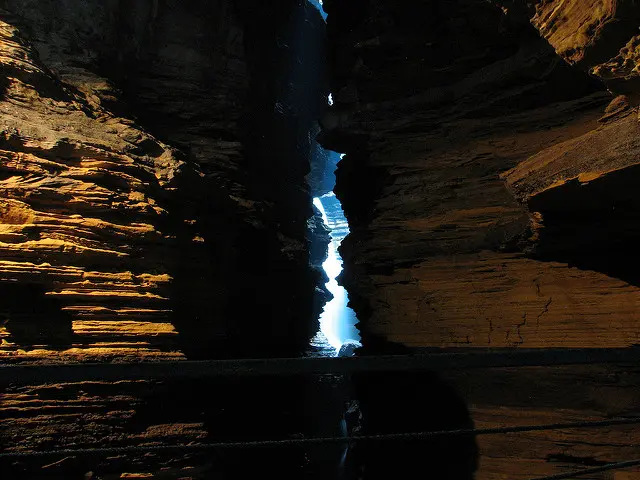
Gupteshwor Mahadev Cave, also known as the Gupteshwor Cave or the Gupteshwor Gupha, is a significant cave temple located in Pokhara, Nepal. It is renowned for its religious and natural significance and is a popular destination for both pilgrims and tourists. Gupteshwor Mahadev Cave is situated in the city of Pokhara, near the famous Davis Falls. It's located to the north of Pokhara and is easily accessible from the city center. The cave is a natural limestone formation, carved by the continuous flow of the Gupteshwor stream. The cave has passages that lead to various chambers with stalactites and stalagmites formations. The cave holds great religious importance for Hindus. It is dedicated to Lord Shiva, and a Shiva Lingam (phallic representation of Lord Shiva) is worshipped inside the cave. Devotees, especially during the festival of Mahashivaratri, visit the cave to offer prayers. The main highlight of the cave is the naturally formed Shiva Lingam, which is believed to be continuously growing. It is considered sacred, and pilgrims offer prayers and perform rituals in front of the Shiva Lingam. One of the unique features of Gupteshwor Mahadev Cave is a waterfall that flows inside the cave. The cave passage takes visitors behind the waterfall, providing a fascinating and immersive experience. The cave is located near Devi's Fall, a famous waterfall in Pokhara. Visitors often combine a visit to Gupteshwor Mahadev Cave with a trip to Devi's Fall, as both attractions are in close proximity to each other. Exploring the cave involves navigating through narrow passages and chambers, creating an adventurous experience for visitors. The natural formations of stalactites and stalagmites add to the geological beauty of the cave. Gupteshwor Mahadev Cave is not only a religious site but also a significant cultural and tourist attraction in Pokhara. The combination of natural beauty and religious significance makes it a must-visit destination. The cave is illuminated with artificial lighting, enhancing the visibility of the geological formations. The play of light and shadow adds to the mystical ambiance of the cave. The cave is easily accessible by road from Pokhara, and it is a common stop for tourists exploring the attractions in the city. The entrance to the cave is located near the Gupteshwor Temple. The site generally provides basic facilities for tourists, including ticketing, guides, and safety measures for cave exploration. Gupteshwor Mahadev Cave is a captivating blend of natural wonders and spiritual significance, making it a memorable destination for those visiting Pokhara.
Swaraj Bhavanallahabad, prayagraj
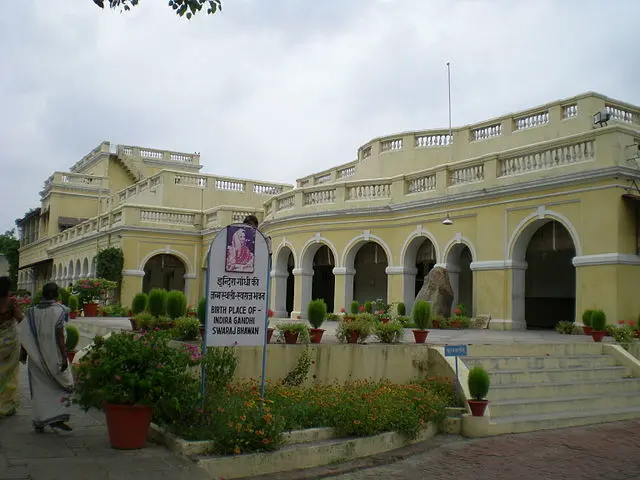
Swaraj Bhavan holds immense historical significance as it served as the ancestral home of the Nehru family, particularly Motilal Nehru, a prominent leader of the Indian National Congress and the father of Jawaharlal Nehru, the first Prime Minister of India. Originally known as "Anand Bhavan," Motilal Nehru, a leading figure in the Indian independence movement, built this grand residence in the early 20th century. The house was later renamed Swaraj Bhavan to commemorate the Swaraj (self-rule) resolution passed by the Congress Party. Swaraj Bhavan was the venue for several crucial meetings and discussions related to the Indian independence movement. In 1929, Jawaharlal Nehru hoisted the tricolor flag at Swaraj Bhavan, marking the Independence Day celebrations. Swaraj Bhavan served as a training ground for many leaders of the Indian National Congress. It witnessed the planning and strategizing of various political activities and campaigns aimed at attaining independence from British rule. The bhavan played a pivotal role in shaping the course of the freedom struggle. Motilal Nehru and other leaders used it as a base for political activities, discussions, and the formulation of policies that would later contribute to the achievement of India's independence. Mahatma Gandhi, the Father of the Nation, visited Swaraj Bhavan on multiple occasions. His discussions and interactions with the Nehru family and other leaders at this venue played a crucial role in shaping the trajectory of the independence movement. After India gained independence, Swaraj Bhavan was donated to the Indian government, and it subsequently became the headquarters of the Jawaharlal Nehru University (JNU). The bhavan continues to house a museum and library dedicated to the history of the Nehru family and the Indian freedom struggle. Swaraj Bhavan is an architectural gem, showcasing a blend of colonial and Indian architectural styles. The building's spacious rooms, verandas, and gardens add to its aesthetic appeal. The museum within Swaraj Bhavan displays artifacts, photographs, and documents that provide insights into the lives of the Nehru family and the historical events associated with the Indian independence movement. Swaraj Bhavan attracts history enthusiasts, students, and tourists interested in India's struggle for independence. The bhavan stands as a living testament to the sacrifices and dedication of the leaders who played a crucial role in shaping the destiny of the nation.
Kanak Bhawanayodhya, uttarpradesh
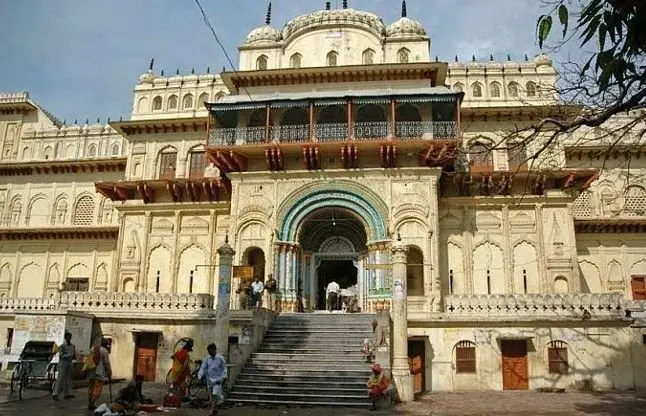
Kanak Bhawan is a significant Hindu temple located in the historic city of Ayodhya in the Indian state of Uttar Pradesh. The temple is dedicated to Lord Rama and his consort Sita. Kanak Bhawan is situated in the heart of Ayodhya, a city revered in Hinduism as the birthplace of Lord Rama. The primary deities enshrined in Kanak Bhawan are Lord Rama and Sita. The temple is known for its unique representation of the divine couple. The temple showcases impressive architectural styles, with intricate carvings and vibrant paintings. It reflects a blend of traditional and modern architectural elements. Kanak Bhawan holds special significance in Hindu mythology. According to the legend, it is said that the temple was a gift from Queen Kaikeyi to her daughter-in-law Sita after her marriage to Lord Rama. The story associated with Kanak Bhawan is rooted in the Ramayana. It is believed that after the marriage of Lord Rama and Sita, Kaikeyi gifted them the Kanak Bhawan palace, which was made entirely of gold (Kanak means gold). The palace was meant to ensure the comfort and happiness of Sita. Over the years, Kanak Bhawan has undergone several renovations and improvements. Devotees and pilgrims continue to visit the temple to seek the blessings of Lord Rama and Sita. The temple witnesses increased footfall during various Hindu festivals, especially during the celebrations of Ram Navami and Diwali, as Ayodhya is closely associated with the life and events of Lord Rama. Pilgrims and devotees visit Kanak Bhawan to offer prayers, seek blessings, and participate in religious ceremonies. The temple is an integral part of the spiritual and cultural heritage of Ayodhya.
Dashrath Mahalayodhya, uttarpradesh
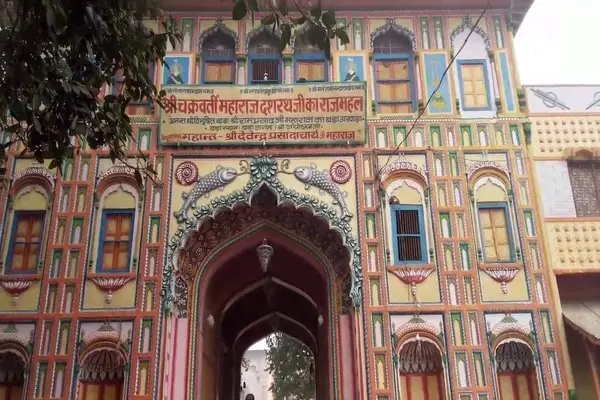
King Dashrath, the founder of Ayodhya and the father of Lord Sri Ram, originally called Dashrath Bhavan in Ramkot, Ayodhya, in Faizabad, home. Dashrath Mahal, often referred to as Bada Asthan or Badi Jagah, is home to majestic King Ram shrines. This charming palace, which is thought to have served as both King Dasharath’s capital and the home of Lord Rama as a youngster, has an ornately designed entrance with lovely murals. Saffron-clad monks may be heard singing, dancing, and reciting mantras inside the palace. The Dashrath Bhavan is a definite draw during celebrations like Ram Vivah, Karthik Mela, Diwali, Ram Navami, and Shravan Mela despite being less than the standard of a palace.
Dashashwamedh Ghatuttarpradesh, varanasi
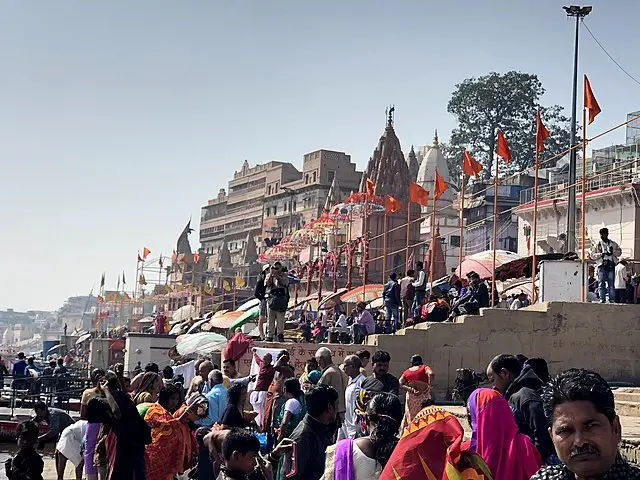
Dashashwamedh Ghat is considered one of the holiest ghats in Varanasi and holds immense spiritual significance. According to Hindu mythology, Lord Brahma performed a grand ritual of sacrifice (yajna) here, hence the name "Dashashwamedh," which means the place of the ten horses. One of the major attractions at Dashashwamedh Ghat is the Ganga Aarti, a mesmerizing and elaborate ritual that takes place every evening. Priests clad in traditional attire perform synchronized rituals with the backdrop of the Ganges River, lamps, and incense. The aarti is a captivating spectacle that draws pilgrims and tourists alike. Dashashwamedh Ghat is a starting point for boat rides on the Ganges, providing visitors with a unique perspective of the ghats and the city. Sunrise and sunset boat rides offer breathtaking views and opportunities for spiritual contemplation. The ghat is frequented by pilgrims who come to take ritual baths in the holy Ganges, believing that it cleanses them of sins and grants salvation. Devotees also perform various religious ceremonies and rituals on the steps of Dashashwamedh Ghat. Dashashwamedh Ghat witnesses numerous auspicious occasions, including religious festivals, cultural events, and special ceremonies. It is particularly vibrant during festivals such as Dev Diwali, when the ghats are illuminated with lamps and diyas. The ghat has a rich historical legacy, with references dating back to ancient texts and scriptures. It has been a prominent location for religious and cultural activities for centuries. The architecture of Dashashwamedh Ghat is a blend of historical and contemporary styles. The steps lead down to the Ganges, providing a picturesque setting for spiritual activities and gatherings. Adjacent to Dashashwamedh Ghat is the renowned Kashi Vishwanath Temple, one of the most sacred shrines dedicated to Lord Shiva. Pilgrims often visit the ghat before or after their darshan (worship) at the temple. The area around Dashashwamedh Ghat is bustling with activity, featuring lively markets where visitors can shop for religious artifacts, traditional clothing, and souvenirs. The markets add to the cultural experience of the ghat. Dashashwamedh Ghat is easily accessible by road, and Varanasi's narrow alleys lead to this iconic location. It is a central point in the city and is often included in the itinerary of tourists exploring Varanasi.
Allahabadallahabad, uttarpradesh
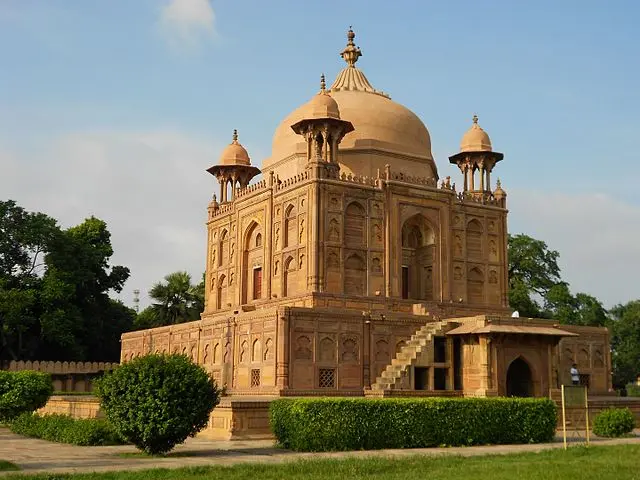
Allahabad is situated at the confluence of three sacred rivers—Ganga, Yamuna, and the mythical Sarasvati. This confluence, known as Triveni Sangam, is considered one of the holiest sites in Hinduism. Pilgrims gather here for religious rituals and to take a dip in the holy waters. The city has a profound historical legacy, dating back to ancient times. It has been a witness to various historical events and has played a crucial role in the cultural and political landscape of India. "Allahabad" means the "City of God" in Arabic, and it was formerly known as Prayag. The city earned this name due to its status as a prominent pilgrimage site and the ancient belief that it is the place where Lord Brahma performed the first-ever yajna (sacrifice). Triveni Sangam is the meeting point of the Ganga and Yamuna rivers, and it is believed that a third invisible river, Sarasvati, also joins here. Pilgrims flock to Triveni Sangam, especially during the Kumbh Mela, to take part in religious ceremonies and seek spiritual blessings. Allahabad is renowned for hosting the Kumbh Mela, one of the largest religious gatherings in the world. Millions of pilgrims and tourists attend the Kumbh Mela to bathe in the sacred rivers and participate in various rituals. The Allahabad Fort, built by Emperor Akbar in the 16th century, is an architectural marvel and a historical monument. The fort houses several important structures, including the Akshaya Vat or the immortal banyan tree. Anand Bhavan is a historic mansion that served as the residence of the Nehru-Gandhi family. It has been turned into a museum showcasing the life and times of Jawaharlal Nehru, India's first Prime Minister, and the Nehru family. The Allahabad High Court is one of the oldest high courts in India, known for its grand architecture and legal significance. The iconic building is situated at the heart of the city. Allahabad has been a center of learning and culture. The city is home to institutions like the University of Allahabad, one of the oldest universities in India, and numerous schools and colleges. The city has been a significant center for literary and cultural activities. The famous literary gathering, the Kumbh Literary Festival, celebrates the rich tradition of Sangam literature and poetry. Allahabad is well-connected by road, rail, and air. The city's strategic location makes it accessible from various parts of India. Apart from the Kumbh Mela, Allahabad celebrates various festivals, including Diwali, Holi, and Eid, with cultural events, processions, and vibrant festivities.
Boudhanathkathmandu, nepal
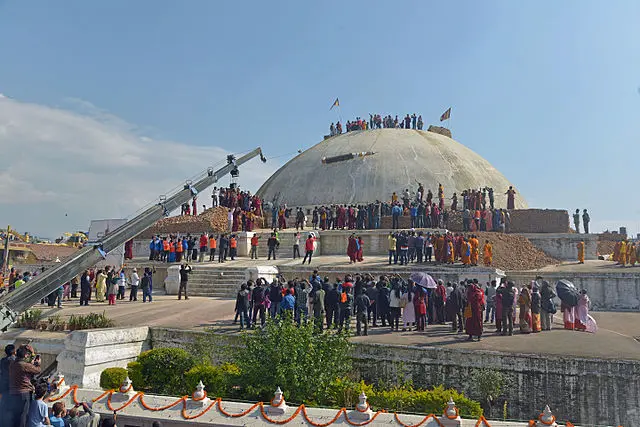
Boudhanath, also known as Boudha or Bouddha, is one of the most significant and revered Buddhist sites in Nepal. Located in the eastern part of Kathmandu, the capital city of Nepal, Boudhanath is a UNESCO World Heritage Site and a major pilgrimage destination for Buddhists. Boudhanath is home to the Boudhanath Stupa, one of the largest stupas in the world. Stupas are Buddhist structures that often contain relics and are places of worship and meditation. The stupa at Boudhanath has a massive mandala or circular base and a towering spire with the watchful eyes of the Buddha painted on all four sides. The architecture reflects traditional Tibetan Buddhist design. Boudhanath is a sacred pilgrimage site for Buddhists, particularly those of Tibetan and Sherpa descent. It holds deep religious significance and is considered an important center for Tibetan Buddhism. Pilgrims from various parts of Nepal, Tibet, and other Buddhist regions visit Boudhanath to circumambulate the stupa, perform prayers, and engage in religious rituals. The stupa is adorned with prayer wheels, prayer flags, and other religious symbols. Devotees and visitors often spin the prayer wheels and offer prayers as they walk around the stupa. The area around Boudhanath is dotted with monasteries, gompas (Buddhist educational institutions), and smaller stupas. Many of these structures serve as centers for Buddhist study and practice. During special religious occasions and festivals, butter lamps are lit around the stupa, creating a beautiful and serene atmosphere. The lighting of butter lamps is a common practice in Tibetan Buddhism. The surrounding area of Boudhanath has numerous cafes and restaurants where visitors can enjoy traditional Tibetan and Nepali cuisine while overlooking the stupa. Boudhanath hosts various cultural events and festivals, drawing both local and international participants. Losar, the Tibetan New Year, is one of the major celebrations at Boudhanath. Boudhanath was significantly damaged during the earthquake in Nepal in 2015. However, extensive reconstruction efforts were undertaken, and the stupa was reopened to the public in 2016. Boudhanath is not only a religious site but also a popular tourist attraction. Visitors are often captivated by the spiritual ambiance, architectural grandeur, and cultural richness of the stupa and its surroundings. The area around Boudhanath has a vibrant market where visitors can find Tibetan handicrafts, Buddhist artifacts, traditional clothing, and more. Boudhanath stands as a symbol of Buddhist spirituality and cultural heritage, offering a serene and contemplative atmosphere amidst the bustling city of Kathmandu. The stupa and its surroundings are a testament to the rich tapestry of religious traditions and practices in Nepal.
Ayodhyafaizabad, uttarpradesh
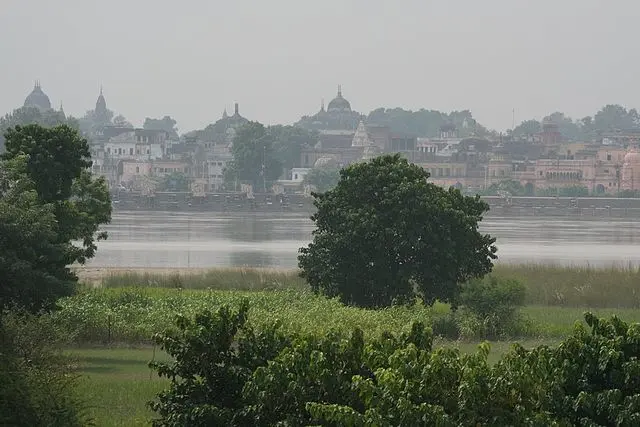
Ayodhya is widely regarded as one of the holiest cities in Hinduism. It is believed to be the birthplace of Lord Rama, a central figure in the Hindu epic Ramayana. The city holds immense spiritual importance and attracts pilgrims and devotees from around the world. According to Hindu tradition, Ayodhya is the birthplace of Lord Rama, the seventh incarnation of Lord Vishnu. The Ram Janmabhoomi is the sacred spot believed to be the exact location of Lord Rama's birth, making it a focal point of devotion and reverence. Ayodhya is prominently featured in the ancient Indian epic, the Ramayana. The epic narrates the life, adventures, and ideals of Lord Rama, portraying Ayodhya as a city of prosperity, virtue, and righteousness. The Ram Janmabhoomi is at the heart of Ayodhya's religious significance. The site is associated with the birthplace of Lord Rama and has been a focal point of religious and historical discussions. The construction of the Ram Temple at this site has been a long-standing aspiration for many Hindus. The sacred Sarayu River flows through Ayodhya, enhancing the city's serene ambiance. Pilgrims often take ritual baths in the river as part of their religious practices. Beyond its religious importance, Ayodhya boasts a rich historical heritage. The city has witnessed the rule of various dynasties, including the Gupta, Maurya, and Mughal empires. The remnants of historical structures, including forts and temples, add to the city's cultural tapestry. Hanuman Garhi is a prominent temple in Ayodhya dedicated to Lord Hanuman. Situated atop a mound, the temple offers panoramic views of the city and is a popular pilgrimage site for devotees of Lord Hanuman. Ayodhya is also home to Tulsi Smarak Bhawan, a museum dedicated to the renowned poet-saint Goswami Tulsidas. The museum showcases artifacts related to Tulsidas and his literary contributions, including the epic Ramcharitmanas. Ayodhya comes alive during religious festivals, with Diwali being particularly grand. The city is illuminated with millions of lights, and the entire atmosphere is filled with festive joy and fervor. Ayodhya is a testament to India's cultural and religious diversity. While primarily associated with Hinduism, the city has historical and architectural elements from various periods, including Mughal and Awadhi influences. Apart from religious sites, Ayodhya has several tourist attractions, including the Kanak Bhawan, Moti Mahal, and the Ayodhya Research Institute. Ayodhya is well-connected by road and rail. The city's accessibility and its status as a revered pilgrimage site contribute to its popularity among tourists and devotees.
Swayambhunathkathmandu, nepal
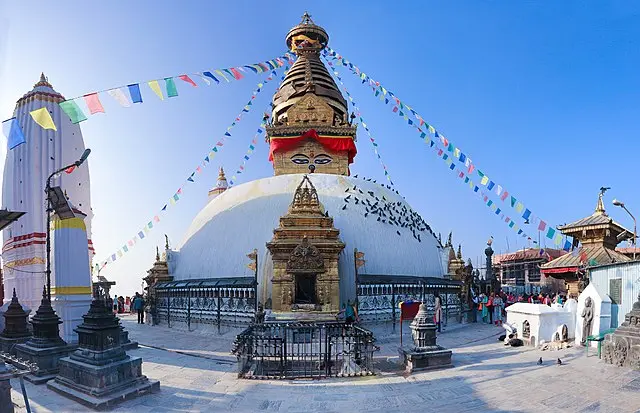
Swayambhunath, also known as the Monkey Temple, is an ancient and iconic religious site located atop a hill in the Kathmandu Valley of Nepal. This UNESCO World Heritage Site is a significant pilgrimage destination for Buddhists and a popular tourist attraction. Swayambhunath is situated on a hill in the western part of Kathmandu, overlooking the city. The stupa is one of the most recognizable symbols of Nepal. The main structure at Swayambhunath is a stupa, a hemispherical mound that represents the dome of the universe. The stupa is adorned with a lofty spire (spire with a conical or pyramid-shaped crown), a prominent feature of Buddhist stupas. Swayambhunath is famous for the "All-Seeing Eyes of Buddha" painted on the stupa's four sides. These eyes are symbolic of the Buddha's wisdom and compassion. The eyes are often depicted in a watchful and serene manner. The stupa is surrounded by prayer flags, which are inscribed with mantras and prayers. These flags flutter in the wind, spreading positive energy and blessings to the surrounding areas. Devotees and visitors often offer candles and butter lamps at Swayambhunath, especially during religious festivals and special occasions. These offerings symbolize the dispelling of darkness and the illumination of wisdom. Swayambhunath is famously known as the Monkey Temple due to the presence of a large number of monkeys around the stupa. These monkeys are considered sacred, and their presence adds to the unique atmosphere of the site. Pilgrims and visitors perform a ritual circumambulation around the stupa, walking clockwise while spinning prayer wheels and chanting prayers. This practice is believed to accumulate merit and positive karma. Swayambhunath has a rich history that dates back more than 2,500 years. It is believed to be one of the oldest stupas in Nepal, with historical and cultural significance. The base of the stupa is adorned with the Dharmadhatu Mandala, a depiction of the Buddhist cosmos. The mandala includes various deities, symbols, and intricate designs. Swayambhunath reflects a harmonious blend of Buddhism and elements of Hinduism. The site is revered by people of both faiths, and it stands as a symbol of religious tolerance and coexistence. Adjacent to Swayambhunath is the Kumbeshwar Temple, dedicated to Lord Shiva. This adds to the cultural diversity of the site. The hill on which Swayambhunath is perched provides panoramic views of the Kathmandu Valley and the surrounding mountains. It is a popular spot to enjoy a breathtaking sunset or sunrise. Swayambhunath is not only a religious site but also a cultural and architectural marvel that attracts visitors from around the world. The spiritual ambiance, the presence of monkeys, and the historical significance make it a must-visit destination in Kathmandu.
Pokharagandakipradesh, nepal
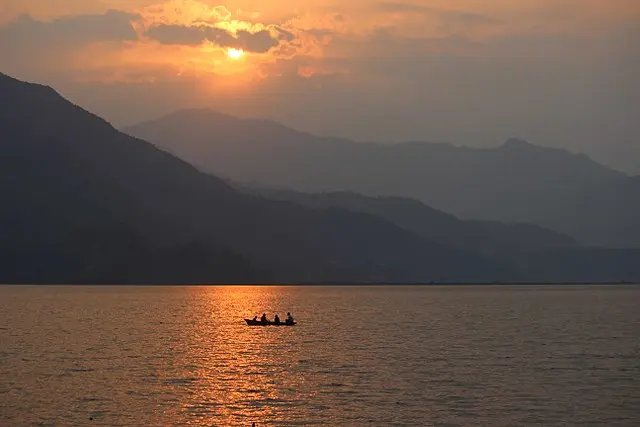
Pokhara is a picturesque city located in central Nepal, at the base of the Annapurna mountain range. It is renowned for its stunning natural beauty, serene lakes, and as a gateway to some of the most famous trekking routes in the Himalayas. Pokhara is situated in the Kaski District of the Gandaki Province in central Nepal. It is approximately 200 kilometers west of the capital city, Kathmandu. The city is known for its tranquil lakes. Phewa Lake, the second-largest lake in Nepal, is a central attraction. The lake offers boating, stunning views of the surrounding mountains, and a vibrant lakeside atmosphere. Pokhara is a gateway to the Annapurna region, and the city provides breathtaking views of the Annapurna and Dhaulagiri mountain ranges. On clear days, the snow-capped peaks are reflected in the serene lakes. The city is a popular hub for adventure activities, including trekking, paragliding, zip-lining, and mountain biking. Treks to the Annapurna Circuit and Annapurna Base Camp commence from Pokhara. Sarangkot, a hill located to the west of Pokhara, is a popular vantage point for sunrise and sunset views. It offers panoramic vistas of the Annapurna range, Machapuchare, and the Pokhara Valley. Situated on a hill overlooking Phewa Lake, the World Peace Pagoda is a prominent Buddhist stupa. Visitors can reach the pagoda by hiking or by taking a boat across the lake. Devi's Fall (also known as Patale Chhango) is a waterfall located southwest of Pokhara. The waterfall, formed by the Pardi Khola stream, disappears underground, creating a unique geological phenomenon. Gupteshwor Cave is a limestone cave near Devi's Fall. Inside the cave, there is a Shiva Lingam and a waterfall that flows from the cave ceiling. Pokhara has various cultural attractions, including the Bindhyabasini Temple and the Old Bazaar. The city reflects a blend of Hindu and Buddhist cultures. The International Mountain Museum in Pokhara showcases the history, culture, and biodiversity of the Himalayas. It provides insights into the lives of the people living in the region. Lakeside, the area around Phewa Lake, is a vibrant and bustling area with numerous restaurants, shops, and hotels. It's a popular spot for strolling, dining, and enjoying the lakeside ambiance. Pokhara is considered one of the world's best paragliding destinations. Adventure enthusiasts can experience tandem paragliding with stunning aerial views of the Himalayas. The city hosts various cultural festivals and events, including the Dashain and Tihar festivals, providing visitors with an opportunity to experience Nepalese traditions and celebrations. Pokhara's natural beauty, adventure opportunities, and cultural richness make it a must-visit destination for travelers seeking a serene and adventurous experience in the heart of the Himalayas.